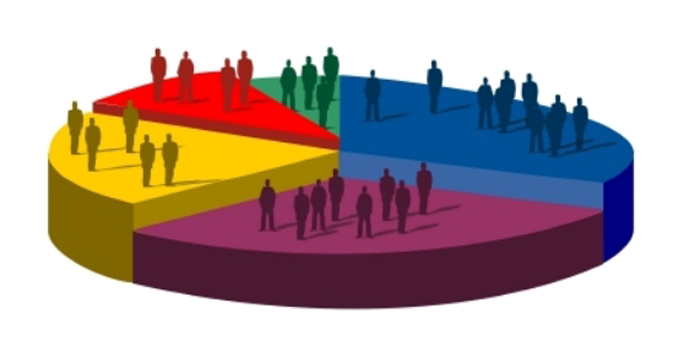
Government, business, and organisations all use demographics in decision makings; in Rotary they can be used in several ways from identifying a club’s viability, locating new clubs, to determining assistance and communication needs by known behavioural identifiers.
These issues can impact matters of efficiency, risk, community support and club sustainability with better informed decision making. Districts can help clubs provide the right product or service for their community and members, by focusing on common issues around growth, productivity, sustainability, access, and risk.
Demographic factors shape the behaviours of communities and our organisation and need to be recognised with the objective of achieving the best possible outcome for all involved.
Some innovative Districts are using official population data from Census data to identify demographics for targeted outreach to attract new members, establishing satellite or even whole clubs to satisfy community demand for products and services, now and in the future.
As there is no one-size-fits-all answer to assist Rotary Clubs, members truly interested in their Club, community and principles of Rotary can benefit from allowing their ages to be securely shared on ‘My Rotary’ to allow District, and Rotary International, to determine the relevant demographics, so as to ultimately gain an understanding of the members, and address our needs.
The standard demographic criteria useful to any membership champion are:
- Age: this data can expose powerful insights into the motivations and behaviours of your members. e.g. it is relevant at functions to determine the investment in food, beverages, entertainment, breaks and length of events, external support, and sponsor potential.
- Gender: gender, including trans and non-binary, plays an important role in human behaviour and enables you to organise and identify opportunities to cultivate a member experience enjoyed by all.
- Profession: is not so important now in Rotary, as at the end of the day we are all on the same level; however, it is handy to enable you to identify potential new members or persons who may be of beneficial in some roles.
Behavioural patterns can also be identified by age demographics:
- Traditionalists / Silent Generation (1927-1946) – adhere to rules, are much disciplined, believe that you earn your own way through hard work, long, grueling hours and believe that promotions and advancement should be the result of tenure and proven productivity. Enjoy stability and often prefer a conversation to an email.
- Baby-boomer (1946-64) – males in particular are significantly less likely to respond to email invites to your events. Prefer low level technology and appreciate the opportunity to mentor, as Millennials are a threat.
- Gen X (1966-85) – threatened by the prosperous Boomers and the fast-moving Millennial, they are fiercely independent, adaptable to flexibility, change and technology – enjoy constructive feedback, intelligent leaders, and working to deadlines.
- Millennial (1985-97) – the largest group in society, sheltered by their parents, but the highest educated and most independent of all generations, they do not take well to criticism. Seek recognition and work for a purpose, not money, and seek a work-life balance. They are the technological generation and seek quality in this area. Females who attend one event are very unlikely to attend another.
Demographics are important to assist in organising members, event attendants, etc. based on different criteria. By correlating your club/district demographics with those readily available from the ABS census data you may take a step forward and help yourself and others in making the right decisions for training and support – those who put barriers up are left with the challenge of managing their own future.
Article by ARC PDG Brian Coffey